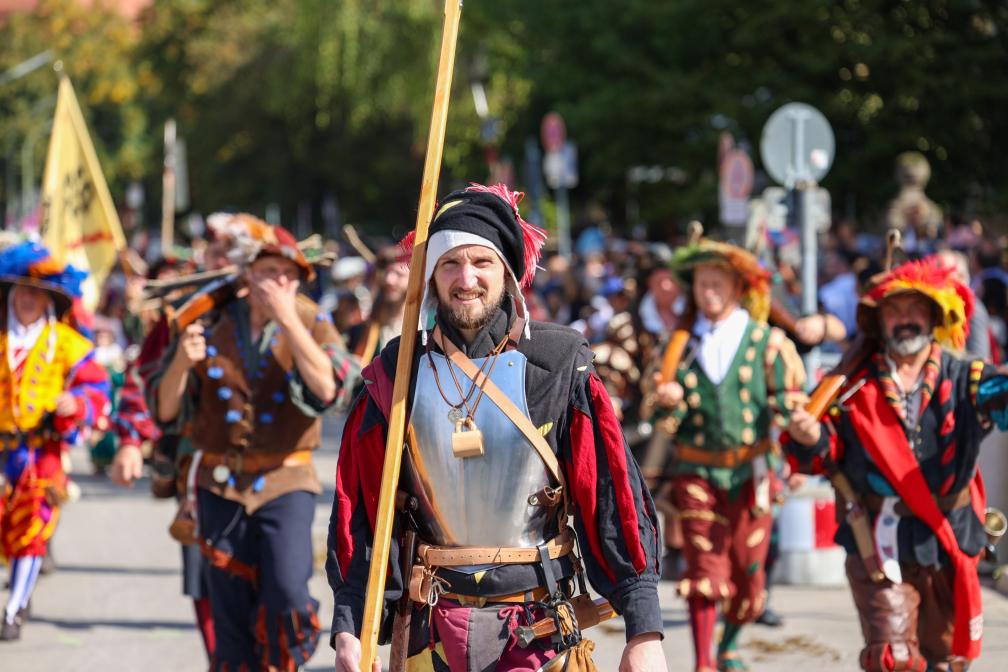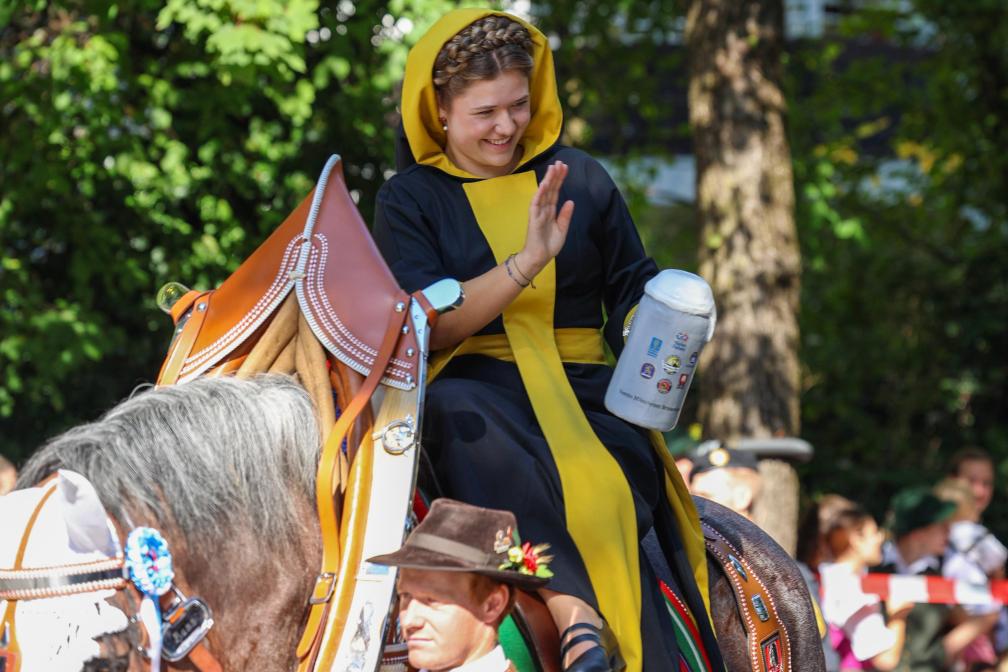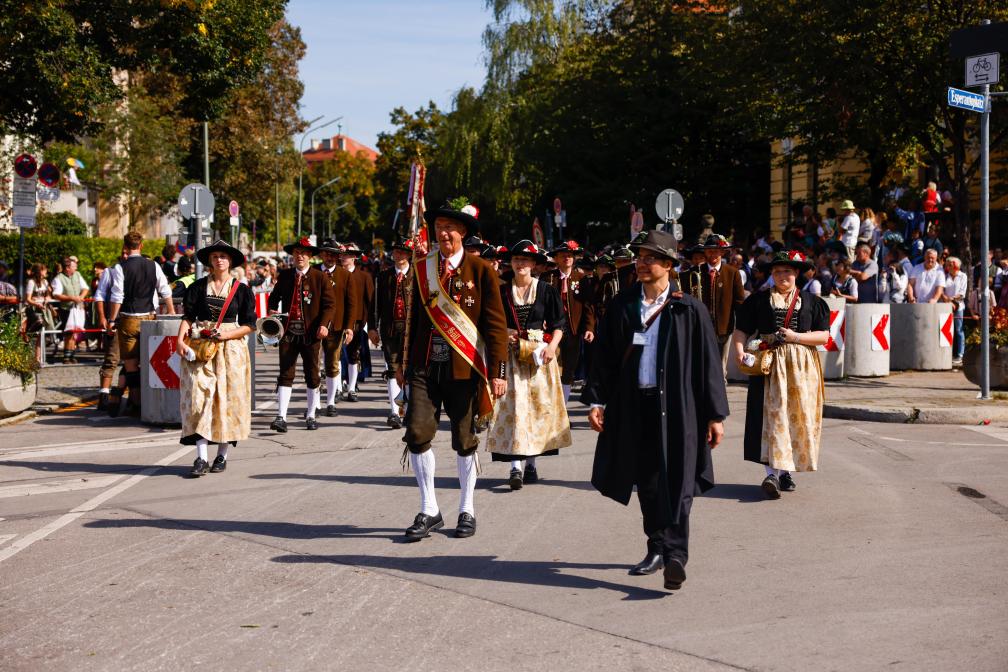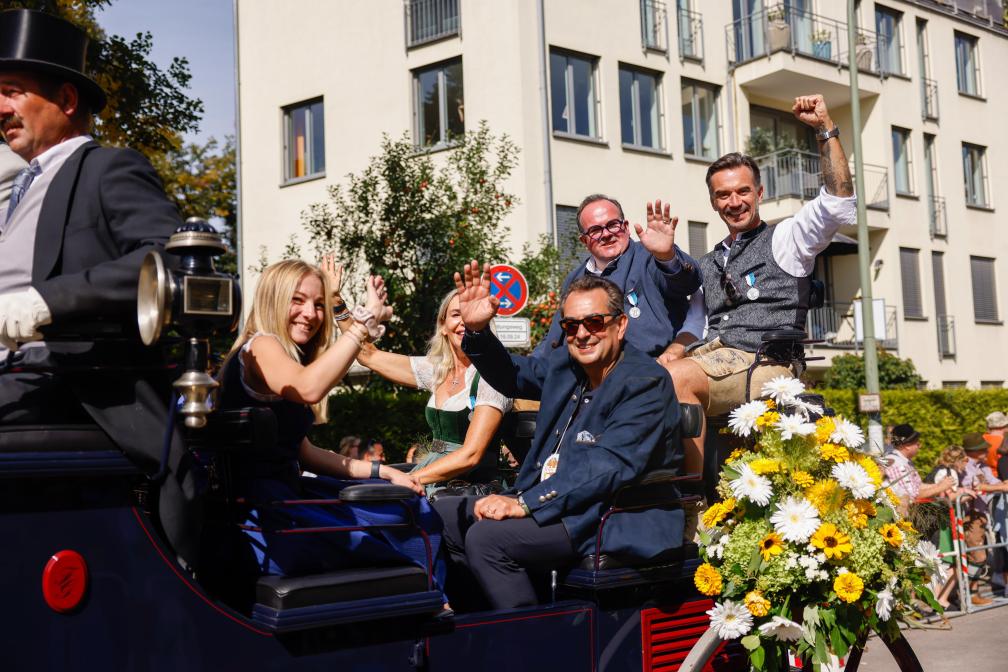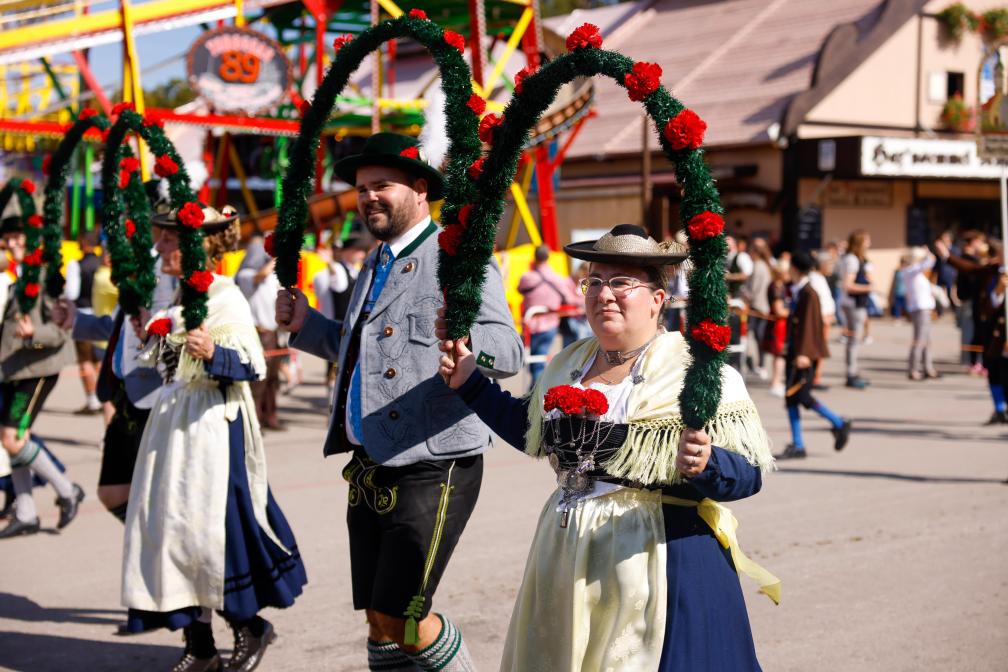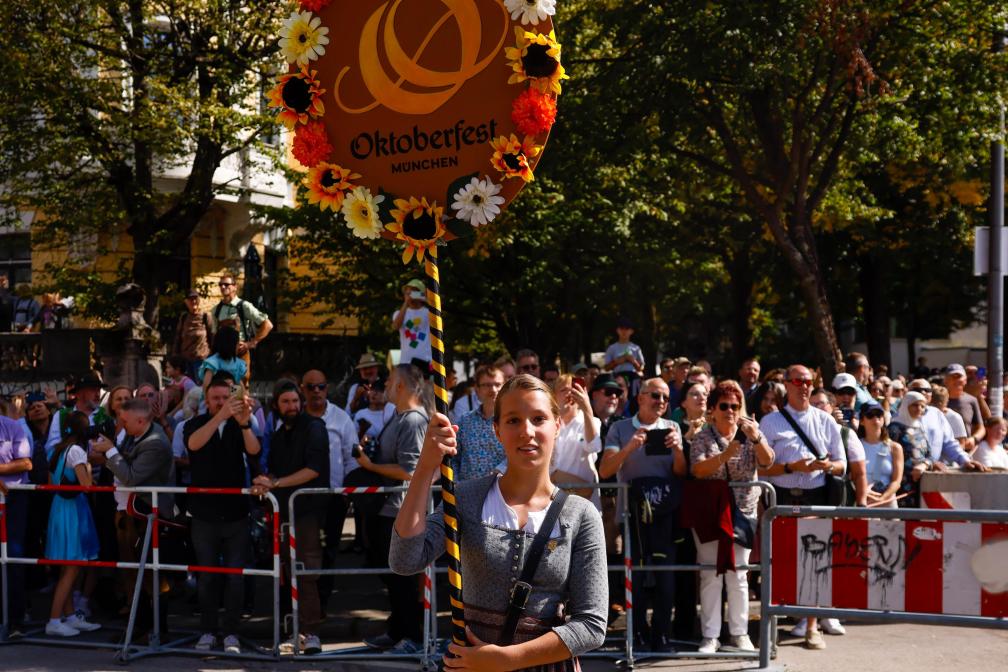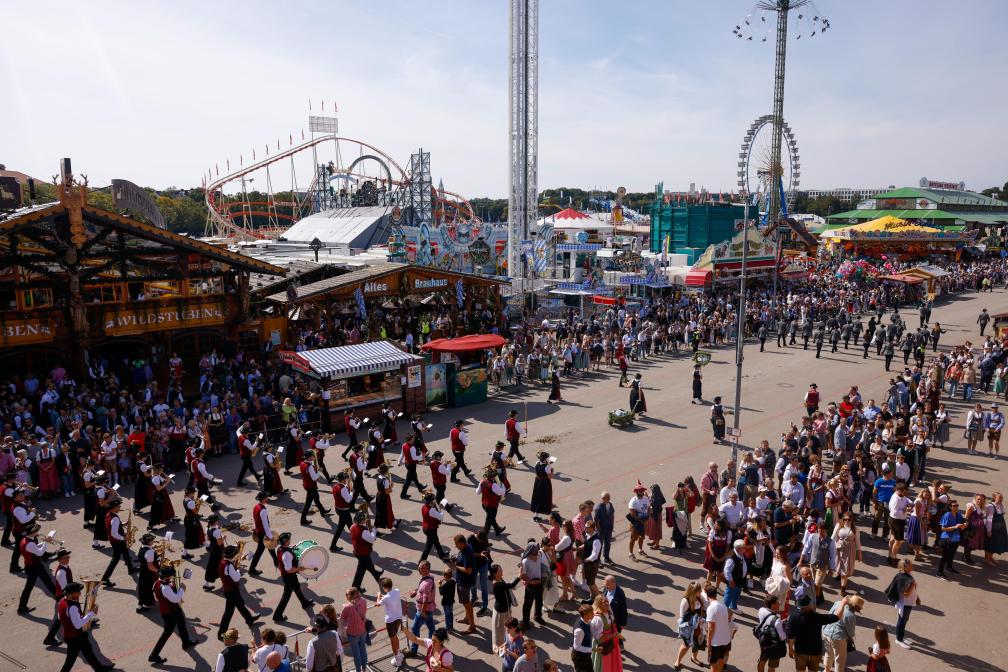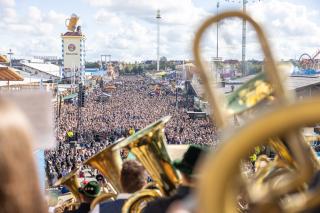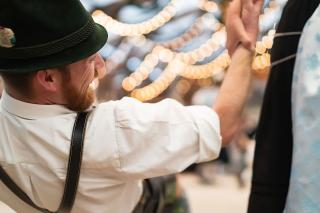One of the event highlights: 60 groups marched through the city center to the Wiesn
Over 9,000 traditional costumers, marksmen, flag-wavers, hunters and members of bands and marching bands took part this year. Groups from many parts of Germany, but also from abroad, traveled to be there. These included guests from Austria, South Tyrol, Italy, Switzerland, Slovenia, Croatia, Transylvania, Poland, Ukraine and Serbia. They all joined the seven-kilometer-long procession.
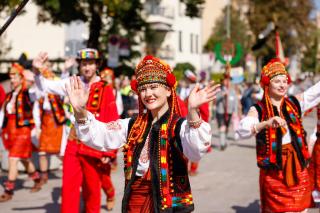
Demonstration procession of traditional costumes, customs and folk dance
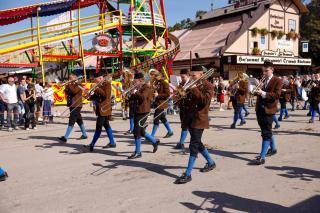
The Trachten- und Schützenzug, which took place for the first time in 1835 in honor of the silver wedding anniversary of King Ludwig I and Therese of Bavaria and the 25th anniversary of the Oktoberfest, is one of the highlights of the Oktoberfest today. The importance of the parade is demonstrated by the live broadcast on ARD, where over a million viewers worldwide watch the colorful event on television every year.
Over 9,000 participants, divided into 60 processions, marched from the Max II Monument through Munich city center to the Oktoberfest meadow and presented the diversity of traditional costumes, customs and folk dance. Many German federal states are represented by traditional costume and music groups and take part in the seven-kilometer-long procession, as do guests from abroad.
Numerous guests of honor also present this year
In addition to the magnificent carriages of the Munich breweries, more than 40 festively decorated floats and carriages emphasized the uniqueness of this parade. Münchner Kindl Franziska Inselkammer led the procession on horseback, followed by Munich's Lord Mayor Dieter Reiter with his city councillors, Second Mayor Dominik Krause, Third Mayor Verena Dietl, Wiesn boss Clemens Baumgärtner and, as guest of honor, Bavarian Prime Minister Dr. Markus Söder, in ceremonial carriages.
